Glistening Beginnings: How Antwerp Became The Diamond Capital
A Brief History of Antwerp
Why has Antwerp become such an important business hub in Europe, not only for diamonds, gems and precious metals, but for all sorts of goods? The answer is simple: for many centuries it was among the most important ports of the continent and still is today (currently, only that of Rotterdam is larger). Located at the upper end of the Schelde river, as early as the 15th century, Antwerp emerged from the shadows of the important neighboring cities of Bruges and Ghent and developed into a metropolis. What followed was the Age of Exploration of the 16th and 17th centuries and many goods from the recently explored territories came to Europe through Antwerp.
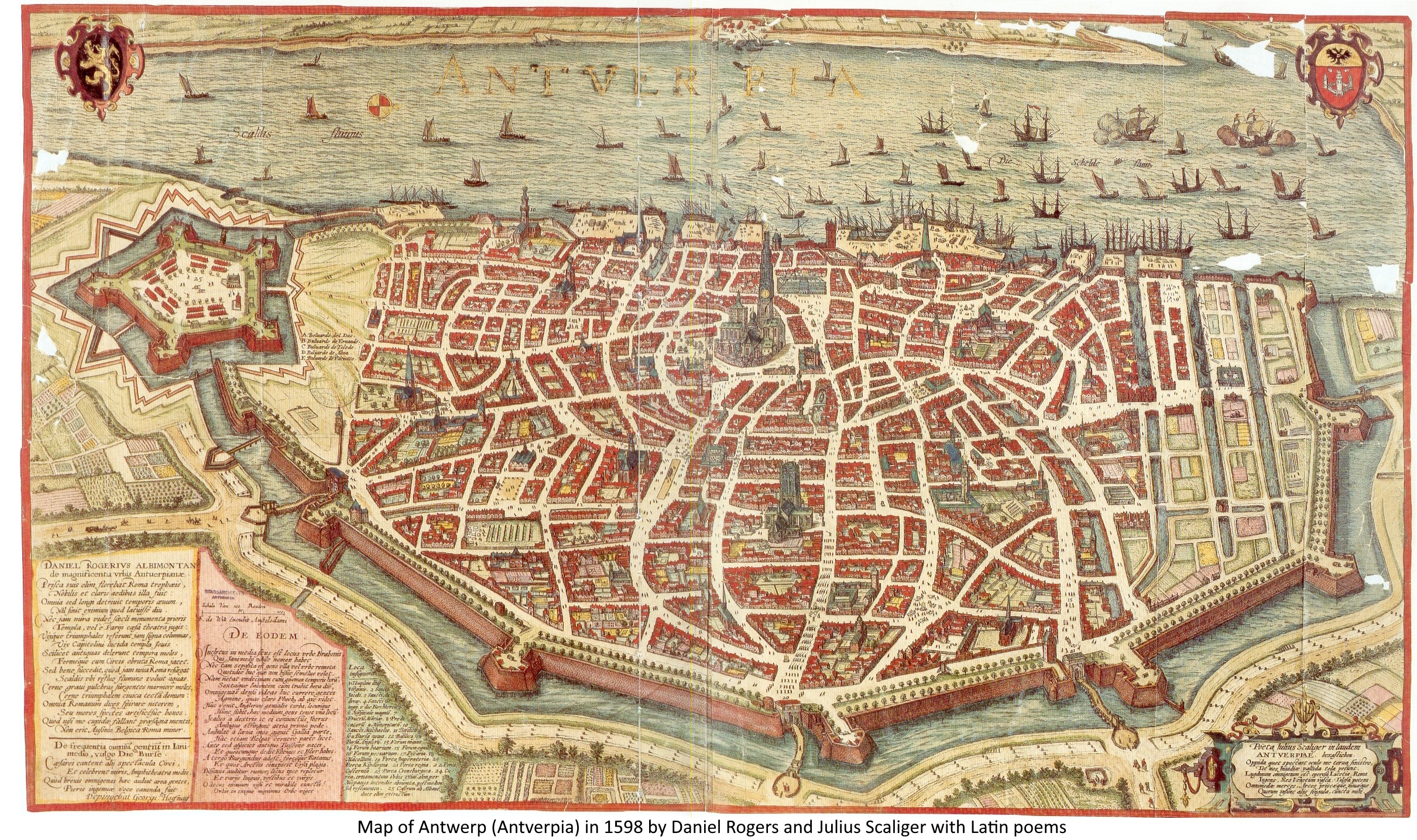
The city lost some of its influence the 17th and 18th centuries, only to experience a new period of prosperity from the mid-19th century. In the brief period under French rule (1794-1814), Napoleon Bonaparte had recognized the importance of the city as a seaport and ordered the construction of its first docks. In the Belle Époque of the late 19th century, Antwerp saw a period of abundance with majestic buildings and ambitious world exhibitions. In the 20th and 21st centuries, Antwerp has maintained its position as supplier of a vast industrial and commercial hinterland. Last but not least, it is today recognized as the largest diamond market in the world.
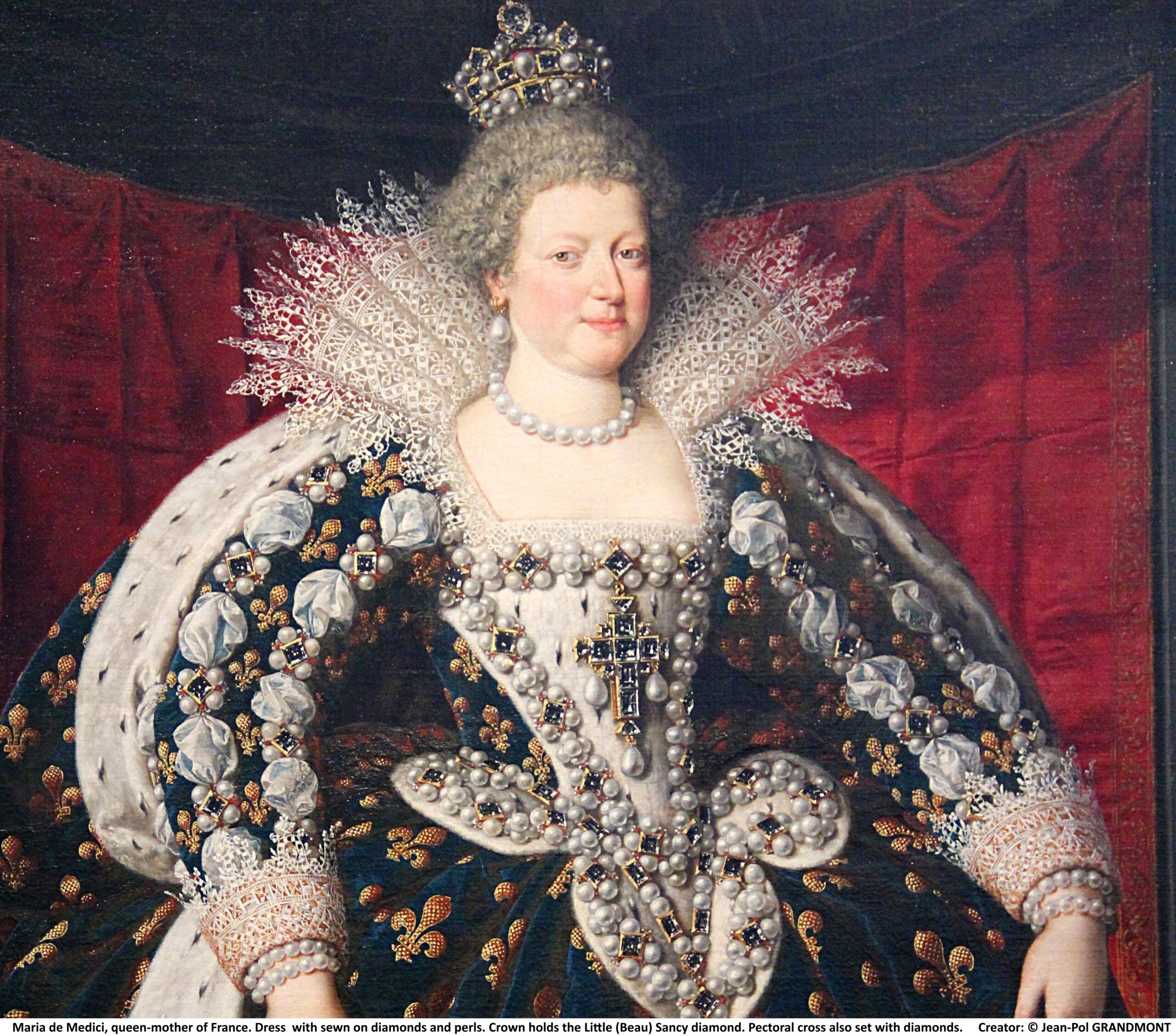
A historical overview of Antwerp’s early connection with diamonds
Though diamond trading in Antwerp can be traced back to 1447, the first documented existence of a diamond polisher is from 1483. Before then, diamonds arriving exclusively from India via Aleppo and Constantinople, had been cut and polished in Venice, Nuremberg, Paris or Bruges. But by 1500, there were already 124 diamond artisans in Antwerp: business was booming.
The rise of the Antwerp diamond district in the 15th and 16th centuries
In the beginning of the 15th century, Antwerp took over from Bruges the role of leading diamond trading center of the region, the two cities lying only 90km apart, and Antwerp being considered a less rigid market than the medieval system which was in place in Bruges. Foreigners viewed Antwerp as a land of unlimited opportunity, where trade was not restricted by legislation. Antwerp managed to secure a permanent position in international trade, involving countries such as Italy, Portugal and Germany. The Italians supplied luxury goods such as golden embroidery, wool, silk, jewels and previous gems. Portuguese ships loaded silver and copper to be sold in Asia. Portuguese cargoes from Africa and India docked in Antwerp, carrying spices, sugar and precious metals and stones, including diamonds, of which the Portuguese held the monopoly at the time.
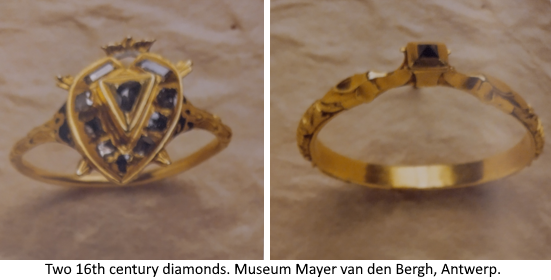
The 16th century marked the beginning of Antwerp’s Golden Age. After decades of struggle and dwindling trade due to wars and blockades, churches and other landmarks were being restored, with important contributions by Baroque artist Peter Paul Rubens. The visual arts, literature and science flourished. Famous printers Plantin and Moretus established a printing industry in the city. Thanks to its booming production and industrialization, Antwerp regained its crucial position in world economy. In 1582, the first diamond polishers guild was established in Antwerp.
Cutting and Trading: The Craftsmanship and Commerce of Antwerp Diamonds
The structure and operation of the Antwerp diamond market
Until 1559, diamond traders in Antwerp had no dedicated venue, shifting from area to area within the cit, often sharing the premises with other traders such as those in works of art, books and cabinetry. But in this year, the diamond merchants moved to an exchange place which stands on the present grounds of the Stock Exchange (Handelsbeurs). The jewellery trade was regulated by strict laws, meant to guarantee the safety of those involved in the selling and buying of precious stones. Robberies were frequent in those times and were naturally detrimental to business. In 1650, a law prohibited the trade of paintings, jewels and carpets, without prior notice to the Mayor. Annual trade fairs were held where foreign merchants arrived in Antwerp and flooded the city with luxury articles.
The first legendary diamond of Antwerp
In the first half of the 16th century, the diamond trade in Antwerp was dominated by the Italian merchant families. Giovanni Carlo Affaitadi was a descendant of the wealthy Affaitadi family from Cremona (close to Milan). Thanks to the fortune he accumulated from his trade in sugar and banking, Affaitadi positioned himself in the diamond industry. He imported diamonds from India and had the cut in Antwerp, then sold the finished diamonds in Lisbon and Venice. Legend has it that the famous pear-shaped Sancy Diamond, after Charles the Bold of France apparently lost it in battle in 1477, was sold to Affaitadi some years later. He sold it to the Crown Prince of France, François, who gifted it to his fiancée Mary Stuart of England. France regained the legendary diamond, as it was given as a present to Mathilde Bonaparte, sister of Emperor Napoleon.
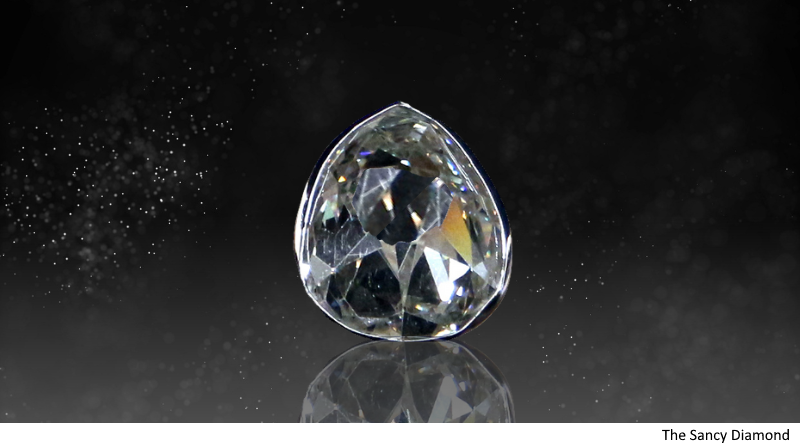
Antwerp diamond trading in the 16th century
In the second half of the 16th century, the market was taken over by the Portuguese, who forced the Italians out. These merchants were almost exclusively marranos, Portuguese Jews who were forcefully converted to Christianity by the Portuguese Crown, but continued to practice Judaism in secret. Like the Italians, they were creditors of royal houses, and they traded in various types of goods from Africa, Asia and South America, most importantly diamonds. The Portuguese Jews were involved in trade in Antwerp until the mid-17th century, when they emigrated to Amsterdam, due to the blockade of the Schelde river which caused the local economy to stagnate.
Trade decline in the 17th and 18th centuries
The blockade resulted in a vast emigration from Antwerp to other cities such as Amsterdam, which caused a plummeting of the economy. The heavy tolls levied on goods were based on volume, the larger the freight, the higher the toll. Fortunately for the diamond industry, this meant that it was the least affected of all by the transportation costs. Although for a century and a half Antwerp was greatly impeded in trading goods and supplied only with inferior stones from Amsterdam, this did not have a large impact on the processing of diamonds. Antwerp suffered no shortage of capital, ans was involved in many maritime ventures of countries such as Spain, France, Holland and Denmark. Also, for the very reason that the imported stones were of inferior quality, Antwerp cutters became extremely talented out of necessity. The diamond trade in Antwerp flourished; it was in this period that the famous “Flemish Heart” started to be produced and was popular throughout Europe.
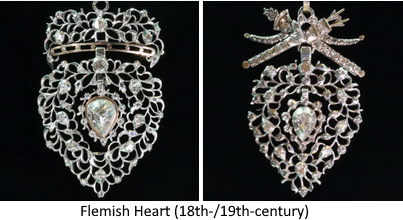
The 19th-century resurgence of Antwerp as a major European port
The rebirth of the economy of Antwerp coincided with the discovery in 1866 of a large quantity of rough diamonds in South Africa, just as the diamonds from India were beginning to become scarce. In 1888, from the merge of the two largest mining conglomerates in Kimberley, was born De Beers Consolidated Mines Limited, the forerunner of the firm that still plays a leading role on the diamond stage today. About half a century after the first discoveries, in 1906, The Cullinan Diamond (the world’s largest rough diamond at 3106 carats) was discovered close to Pretoria. The South African diamonds changed the world market rapidly and the skill of the Antwerp polishers and cutters were in high demand, resulting in Antwerp resuming its place as leader of the diamond processing industry. There was an inflow of dealers toward the end of the 19th century, which resulted in the exponential rising of the volume of traded goods. In 1893, the Diamantclub van Antwerpen was created as the first Diamond Bourse of the city. A few years after its inception, the Bourse acquired and moved to the building which still stands today in Pelikaanstraat, as the cornerstone of Antwerp’s modern diamond district.
Antwerp through the World Wars until today
During the First World War, Antwerp again faced difficulties as diamonds arriving to the city were scarce. The London Diamond Syndicate, created by De Beers in the 1890s as a means to control the prices and demand, refused to supply Antwerp with rough diamonds as Belgium was occupied by Germany. The Antwerp diamond workers were forced to work clandestinely on stones smuggled into the city. Many merchants and gem workers found refuge in England and Holland, continuing their work in exile. Belgium took the step of training several hundred apprentices to the art of diamond processing, so that Antwerp would be prepared for the flow of diamonds which would eventually begin to enter the city after the war was over. This is probably the reason for the resulting influx of diamond polishers and other processors from Amsterdam to Antwerp.

After a period of relative stability in the 1920s, Antwerp faced the dangers of the Second World War. Many diamond merchants continued their activities in England and eventually in the U.S.A. Among them was Romi Goldmuntz, son of a Jewish diamond merchant who emigrated to Antwerp from Krakow. Goldmuntz had an important role in preserving the diamond industry in Antwerp, as he personally brought the first postwar diamonds back to the city in 1944, convinced those who had moved to the U.S.A. to return to Antwerp and became the honorary president of the SBD (Syndicate of the Belgian Diamond Industry). The diamond industry boomed in the following years, with thousands of diamond workers and merchants involved and polishing factories and processing workshops sprung up all over the city.
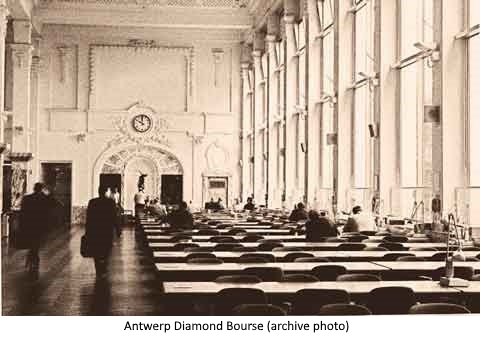
Diamond industry in Antwerp from the mid-20th century until today
Antwerp’s diamond industry continued to upgrade its privileged position in the diamond world from the mid-20th century until today, mainly thanks to its bourses, which allowed trade to flourish. It is specific to diamond bourses that all goods, i.e. gems, presented are unique. Therefore it does not function as a stock exchange, where a trader decides to buy or not a stake in a company or a commodities exchange where one trades contracts representing various sorts of produce. The trading of diamonds requires an atmosphere of trust, discretion and safety, an environment were the gems can be examined and analyzed, and allow for safekeeping if necessary. This has been the essential role of the diamond bourses, from the Antwerp Diamond Club founded in 1893, to the Diamond Bourse erected in 1904. Renovated entirely in 1969 into a modern complex with restaurant, cafeteria, reading-room and 400 offices spanning eleven floors, the Bourse is the heart of the diamond district today. The present-day building of the Anwerp Diamond Club is in a neighboring building to the Bourse and these two organizations strive to maintain a regulated framework for the diamond industry as well as a a meeting place for diamond traders, brokers and manufacturers.
![]()
![]()
Links to more knowledge
The Gemological Institute of America (GIA)
The Diamond Pro (Diamond Prices)
The AWDC (Antwerp World Diamond Centre).
Books of interest
Diamonds. (Bruton, Eric. 1978, Chilton Book Company, Pennsylvania, USA)
